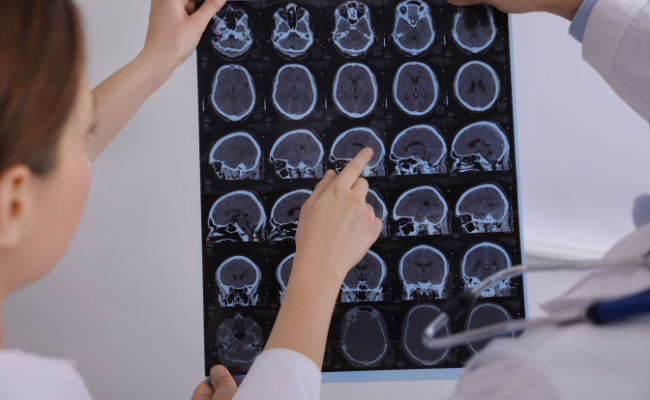How to Treat Balos Disease?
- December 04, 2023
- No Comments

What is Balos Disease?
Balos Disease, also referred to as Baló's concentric sclerosis, is an exceptional and severe neurological disorder distinguished by the formation of concentric rings of demyelination in the brain. Demyelination, entailing the loss or impairment of the protective myelin sheath around nerve fibers, disrupts the efficient transmission of nerve signals. Despite being categorized as a variant of multiple sclerosis (MS), Balos Disease possesses distinctive features that distinguish it as a unique entity within the realm of demyelinating disorders.
This uncommon and progressive subtype of multiple sclerosis, known as Balo Disease, showcases its rarity and unique progression. While multiple sclerosis typically emerges in adulthood, Balo Disease has also been observed in childhood cases. Its progression stands in contrast to the fluctuating nature often associated with multiple sclerosis, as Balo Disease exhibits a tendency to advance rapidly, introducing a distinctive dimension to the spectrum of demyelinating disorders.
Why does Balos Disease Occur?
The precise cause of Balos Disease remains elusive, prompting ongoing research to unravel its underlying mechanisms. However, it is generally recognized as an autoimmune disorder, wherein the immune system erroneously targets and attacks the myelin sheath, resulting in its destruction. Genetic predisposition and environmental factors are also suspected contributors, although a comprehensive understanding of their roles necessitates further exploration. Balos Disease's rarity adds to the complexity of understanding its etiology, underscoring the need for ongoing scientific inquiry into this neurological condition.
How is Balos Disease Diagnosed?
Diagnosing Balos Disease involves a multifaceted approach that includes clinical assessments, thorough medical history reviews, and advanced imaging studies. The key diagnostic tool in unveiling the characteristic concentric rings of demyelination is Magnetic Resonance Imaging (MRI). Due to the rarity of Balos Disease, diagnosing it can be challenging, and the expertise of a neurologist is indispensable in accurately distinguishing it from other demyelinating disorders. The visual confirmation of concentric lesions on MRI scans is pivotal in confirming the diagnosis and initiating appropriate treatment strategies.
Treatment Solutions for Balos Disease
- Immunomodulatory Therapy: Given its autoimmune nature, Balos Disease often responds to immunomodulatory therapies. Medications like corticosteroids, interferons, and other immunosuppressive drugs may be prescribed. These aim to modulate the immune response, reducing inflammation, and slowing down the immune system's assault on the myelin sheath.
- Plasma Exchange (Plasmapheresis): Plasma exchange, or plasmapheresis, involves the removal and replacement of the liquid component of the blood (plasma). This process serves to eliminate harmful antibodies and immune cells responsible for the demyelination process, offering a targeted therapeutic approach.
- Disease-Modifying Therapies (DMTs): Disease-modifying therapies, commonly employed in various forms of multiple sclerosis, can be considered in the treatment plan for Balos Disease. These therapies aim to alter the course of the disease, mitigating relapses, and slowing down its progression.
- Symptomatic Treatment: Symptomatic treatment addresses specific symptoms associated with Balos Disease. Physical therapy, occupational therapy, and medications targeting pain, spasticity, and fatigue play a role in enhancing the overall management of the condition.
- Close Monitoring and Rehabilitation: Regular monitoring of disease progression is essential in managing Balos Disease effectively. Rehabilitation programs, including physical and occupational therapy, contribute to improving and maintaining functional abilities, thereby enhancing the individual's overall quality of life.
Benefits of Early Detection and Treatment
- Prevention of Further Demyelination: Early intervention in Balos Disease aims to prevent further demyelination, minimizing the extent of damage to the myelin sheath. This proactive approach contributes to better long-term outcomes and improved neurological function.
- Reduced Relapse Frequency: Disease-modifying therapies and immunomodulatory treatments have demonstrated efficacy in reducing the frequency and severity of relapses associated with Balos Disease. This provides individuals with a more stable and manageable disease course.
- Enhanced Quality of Life: Symptomatic treatment and rehabilitation efforts collectively enhance the overall quality of life for individuals living with Balos Disease. Addressing specific symptoms and improving functional abilities contribute to a more fulfilling and independent lifestyle.
- Optimized Management of Symptoms: Early intervention allows for a more proactive approach to managing symptoms associated with Balos Disease. Whether it's addressing pain, spasticity, or fatigue, targeted treatments can effectively alleviate these issues, significantly improving daily functioning.
- Patient Empowerment and Education: Early detection facilitates healthcare providers in educating patients about the nature of Balos Disease, potential triggers, and effective self-management strategies. Empowering patients with knowledge enhances their ability to actively participate in their care, fostering a collaborative and informed approach to managing the condition.
Comments (0)